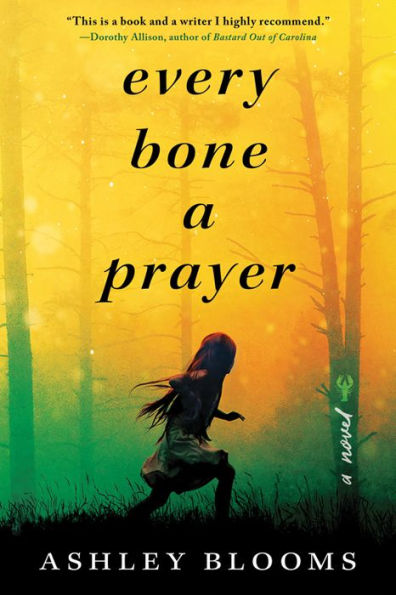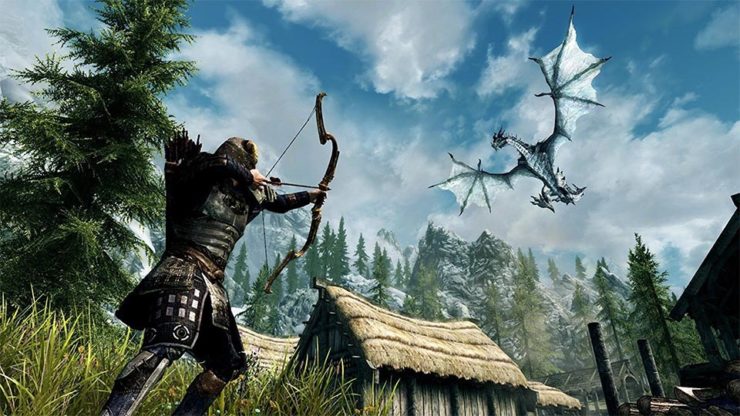Whiterun. Alduin. Dragonborn. Skeever. At the start of 2018, those words meant nothing to me. I couldn’t have told you who the Black-Briars were or why taking an arrow in the knee was supposed to be funny. Belethor? Never heard of him.
Instead, I spent most of 2018 and the two years prior in therapy, where I was diagnosed with PTSD after living with the symptoms for over a decade. I underwent EMDR, an intensive form of psychotherapy that helps process traumatic memories. I learned what my triggers were and how to respond to them, talked about my inner child, sat in a small room and recalled some of my most painful memories.
I was enormously privileged to have the resources and time to spend on my therapy, but after focusing on it for so long I began to doubt how I could move forward. Stirring up the old waters of my memory left me hyper-vigilant and scared of what would come next. And all my old ways of coping? Well, most of them weren’t so good for me after all. I’d need to learn better ways to take care of myself moving forward. It felt like my old save file had been lost or corrupted and I was being forced to start over as a level-one character with nothing but the tunic on my back and a dragon bearing down overhead.
I needed a Hadvar to lead me through the caves. I needed to escape.
So when my partner bought Skyrim in the spring of 2018 I was curious, but also highly skeptical. I had stopped playing video games around the age of Spyro and Crash Bandicoot. The only exposure I’d had since then was from high school boyfriends who played an endless parade of Call of Duty, Halo, and Gears of War. They’d all handed me the controller at some point and tried to get me to play along, but the experience was disorienting. I couldn’t get my player to move properly, couldn’t even aim my weapon before I was being tracked down and shot, the scene crashing to the ground as my character died and re-spawned, caught in an endless loop of kill or be killed. I’d already struggled to feel like I controlled my body in real life so I didn’t need to recreate that in a video game.
But I was desperate to fall into a different world, so I made myself a Breton and gave Skyrim a chance. And though it started out as an escape, the game ended up being more than that. Skyrim became a way for me to think about my PTSD and my future without feeling overwhelmed. Art has a way of holding up a mirror to ourselves in the form of other characters, other places, other stories. Odd how it can be so much easier to love, admire, and forgive something when it isn’t myself.
I’m now on my fourth play-through of the game, and in those 400+ hours Skyrim helped show me three important lessons on how to live a full life with PTSD.
Don’t go it alone.
Both Skyrim and life are often a lot more enjoyable when you have support. I nearly stopped playing the first time after I lost Lydia, the game’s iconic first follower, somewhere in Fellglow Keep. I’m still not entirely sure how it happened, but she completely disappeared. I was so distraught I scoured Whiterun’s Hall of the Dead, ran back and forth to Dragonsreach, waited for days in-game, lost and frustrated, and not just because I was sad to lose the gear I’d equipped her with. Did I even like Lydia? Not particularly. But she had been sworn to carry my burdens and without her the game felt intimidating. Even though Skyrim’s combat is not nearly as aggressive as other games’, I was still in survival mode in real life and easily startled by in-game enemies. When I was with Lydia all it took was the slightest provocation for her to go charging ahead with her enormous warhammer while I hung back and dealt long-range damage. Without her, the game became stressful.
Eventually, I found Rayya and Barbas and formed a little party I could rely on and the game became more welcoming again. In my own life these roles are filled by my partner and friends instead of housecarls and talking dogs. When I’m caught in a never-ending loop of outdated coping mechanisms I text a friend with a similar background and we lament the difficulty of growth, the absurdity of life’s leveling system. When going to events my partner often comes along—his easy manner like a socially-acceptable equivalent of Lydia’s warhammer, both making sure I feel comfortable and safe. Turns out I am far less afraid when I don’t have to face the world alone.
Find your playing style.
It won’t be surprising to learn that once I discovered how to be a stealth archer there was really no turning back. I was most comfortable engaging with Skyrim from a distance. There is a certain pleasure in one-shotting a Bandit Marauder and hearing that odd little sneak-bonus sound as my arrow connects.
Buy the Book


Every Bone a Prayer
But in subsequent play-throughs I found that I was more comfortable fighting in melee range. My familiarity with the world meant I didn’t mind going in dual-casting destruction magic or wielding sword-and-board. I could engage differently once I was comfortable.
There is no single right or good way for me to engage with the world, either, but I still catch myself making moral judgments of my behavior. When meeting a group of new people I tend to be quiet at first, feeling out the room. A voice in my head chides: you should be more outgoing, you’ll never make friends like that, no one will remember you if you’re stuck to the wall all night. But that isn’t really fair, is it? Every situation, every Nordic ruin, every party, might require something different to succeed. It doesn’t mean that one method is inherently better. So instead of judging myself for not being someone else, I can remember Skyrim and be more gentle with myself, and trust that I will find ways to feel comfortable and safe enough to put myself out there without betraying my boundaries.
Look for the glowing mushrooms.
One of the elements of video games that I’ve come to appreciate most is level design. The different types of zones in Skyrim create a kind of language, one that gets transmitted through experience until I know what I can expect, even how much time I can anticipate spending in a Nordic ruin vs. a Forsworn hideout vs. a Falmer den. The last of these is still the most stressful to me even after multiple play-throughs. Falmer are quick, quiet, and difficult to see. They lurk in the shadows, hunched and shuffling, or literally leap from nests built into the walls above. They are, in a word, unpleasant.
But even in the most hostile environment, there’s always a little light to point the way. In Falmer dens, that light often comes from glowing mushrooms strategically placed on the walls to help you figure out which way to go. In life, my glowing mushrooms take many forms. Just this year I worked with my therapist to begin taking medication as-needed for my anxiety. It was a choice I’d put off for years because of, well, my anxiety. But now when I am feeling overwhelmed, on the verge of shutting down, I have a little light to look for. Other lights I’ve developed are: meditation, mindfulness, embodiment techniques I learned in therapy, the friends and partner I mentioned earlier, my writing, rewatching my favorite movies and shows. All of these things—great and small—are the lights that help me find a way forward even in the darkest of times. It took me years to gather these items and a long time to figure out that if you can’t find a glowing mushroom in the wild, sometimes you have to plant it yourself.
It’s hard to say exactly what alchemy made Skyrim the perfect game at the perfect moment for me. But when I needed an escape it offered a single-player open-world and a rich fantasy backdrop where I could wander for as long as I wanted—a day lost to gathering herbs or trapping souls actually gave me the space I needed to reconsider my life after so many things had changed. Skyrim didn’t just lead me to Tamriel, it led me back to myself, and I will always be grateful to it. In my most recent play-through I’m back as a Breton, this time with new companions, Inigo and Lucien, and lots of new quests and gear created by a vibrant modding community. Skyrim, still loved almost a decade later despite its bugs and quirks, keeps growing and changing, and every time I return I find something new to love about the game, and, often, something new to love about myself.
Ashley Blooms is the author of Every Bone A Prayer (Sourcebooks, 2020). She’s a graduate of the Clarion Writer’s Workshop and received her MFA from the University of Mississippi. Her fiction has appeared in The Year’s Best Dark Fantasy & Horror, Fantasy & Science Fiction, and Strange Horizons, among others.










